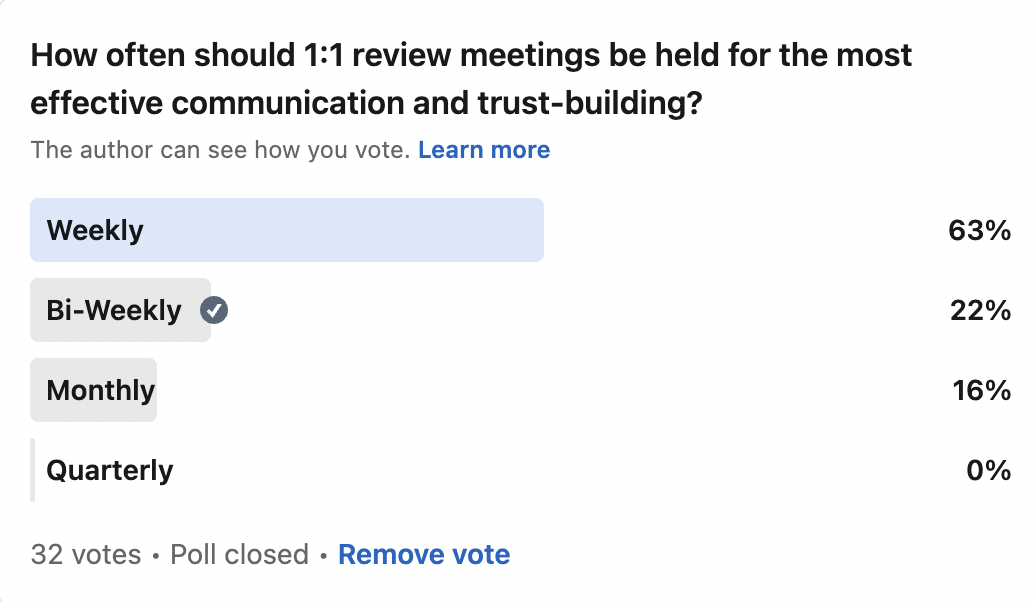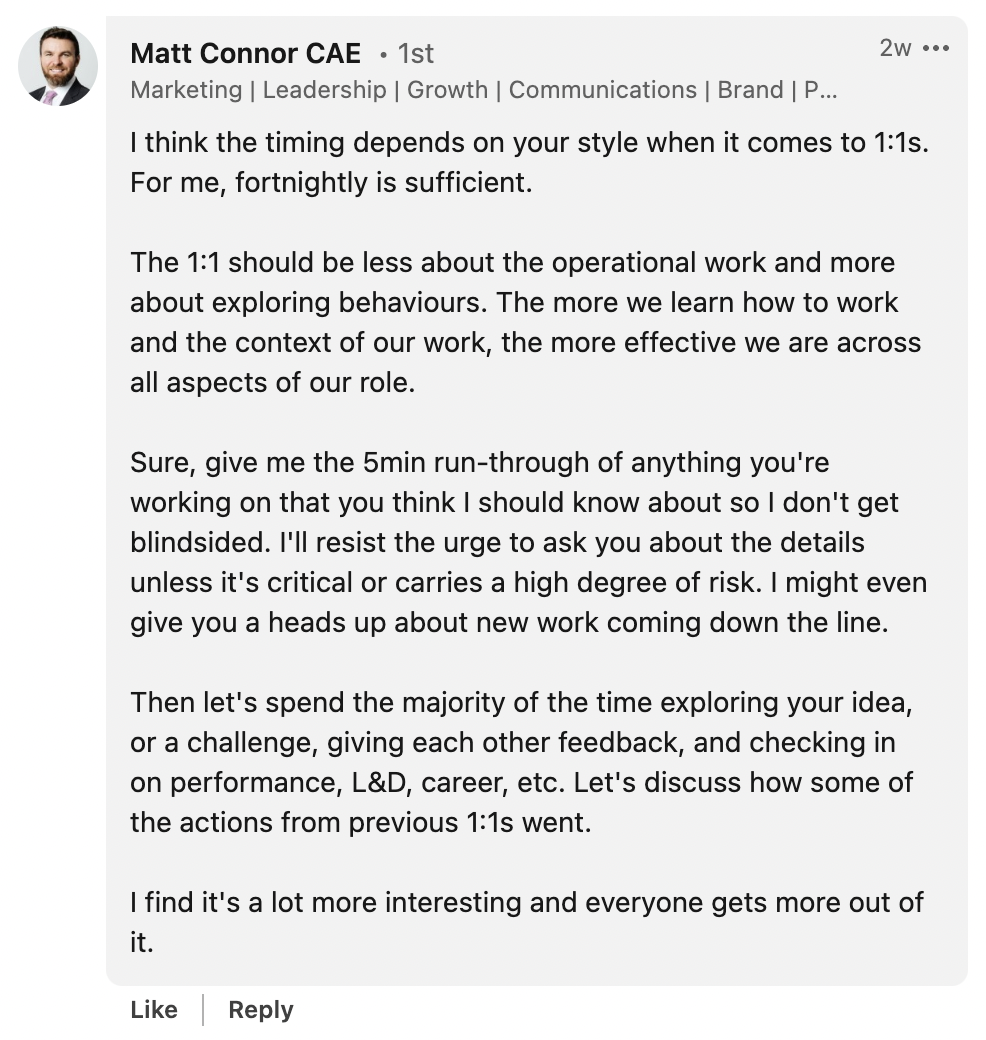
How Often Should We Schedule 1:1 Meetings for Effective Communication?
1:1 meetings are crucial for building trust and keeping everyone on the same page, but how often should we have them? I recently ran a LinkedIn poll to get some different perspectives, and the insights were pretty interesting.
What We Learned from the Poll

Most professionals who responded to our poll prefer weekly 1:1s – 63% think it’s the best way to keep connected. It seems like having that regular weekly check-in helps keep things smooth and everyone informed. Another 22% said that meeting every other week works best for them, suggesting that for some, a bi-weekly catch-up strikes the right balance between staying informed and not feeling micromanaged.
Very few voted for monthly or quarterly meetings, which tells us that waiting too long between check-ins might leave too much room for miscommunication or missed opportunities to address issues as they come up.
Matt Connor shared some valuable thoughts that really resonated with me in the comments. He pointed out that 1:1s should be less about ticking off task lists and more about digging into bigger ideas like career growth, learning, and feedback. It’s not just about what we’re working on but how we’re working on it and growing while we do it.

Making 1:1 Meetings More Effective
Here’s how we can all think about making the most of our 1:1 meetings:
One Size Doesn’t Fit All
There’s no magic formula for how often to hold 1:1 meetings – it really depends on what works best for the dynamics of your team. While a weekly check-in is perfect for keeping the lines of communication open for most, others might find a bi-weekly schedule more fitting, reducing the risk of micromanagement while still staying closely connected. It’s all about matching the rhythm to the pace and needs of each role, considering factors like project timelines, personal work preferences, and the nature of the tasks at hand.
Focus on Growth
1:1s are the ideal time to shift the focus from the immediate to-do list to bigger career and personal development discussions. Dive into topics like career progression opportunities, skills development, and maybe even long-term professional goals. This isn’t just about tracking progress, it’s about supporting growth and inspiring ambition.
Encourage Open Dialogue
Make sure these meetings are a two-way street. Everyone should feel comfortable bringing up concerns, ideas, or personal career ambitions. Transform these meetings from monologues into dialogues. This is the time for employees to voice any concerns, float new ideas, and discuss career aspirations. Creating an environment where both sides can speak freely will make these meetings more fruitful and engaging. It’s about building a two-way street where feedback flows both ways.
Schedule Follow-Ups
Whatever you discuss, make sure to follow up. It shows commitment and helps ensure that plans turn into actions. Whether it’s revisiting the outcomes of previous discussions or checking in on agreed actions, following up shows that you’re invested in not just the conversation, but also in the action points that come out of it. This commitment helps turn dialogue into tangible outcomes and shows that these meetings are more than just talk.
1:1 meetings are a key tool for encouraging an open, supportive, and engaged workplace with real mentorship, not just management. By finding the right frequency and focusing on meaningful dialogue, we can ensure these interactions genuinely contribute to our collective success.
Get in Touch
"*" indicates required fields
"*" indicates required fields